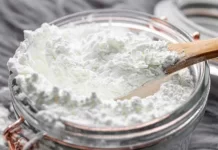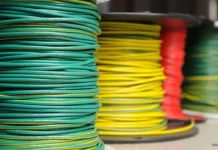Whether you need to replace a wall shower arm because of leakage, residue, or rust (or you want to upgrade), it is work that most homeowners can accomplish with the tools they already have. If you want to learn how to repair a shower arm, continue reading. If you feel like you need a change, the moment has come to educate yourself on how to replace a wall shower arm.
Install or Replace a Shower Arm:
Now that you have everything you need, installing a shower arm may be done in just seven simple stages, which are as follows:
- Shut off the water – Start turning off the water supply to the entire bathroom when you first get there. It can be accomplished by turning off the water supply at the main valve, which is often situated at the point where your plumbing system links with your water supply. You can also seek a valve that turns off the water supply to the shower by looking under the sink in the bathroom or behind a wall panel that can be removed.
- Remove the showerhead- It will be much simpler to take off the shower arm if you take the showerhead off first. Perform this step regardless of whether you plan to keep the showerhead that is now installed or replace it with a new one. While you use the pipe wrench to turn the showerhead nut, you will need someone to hold the shower arm in place. If the showerhead is covered in scale, soak it for a few minutes in a bowl of vinegar (you will need to hold it up to the showerhead, so it is submerged), releasing the minerals and making it simpler to remove the scale.
- Clean the existing shower arm – Remove any different scale, mold, or mildew from the area around the existing shower arm to make removing the existing shower arm simpler. Either a calcium and lime scale remover or vinegar comes highly recommended by our team.
- Unscrew the existing shower arm – hold it in place with the longest adjustable pipe wrench. You must move gently during this process. If the shower arm does not come loose easily, you should immediately cease working on it to prevent breaking it. If the shower arm does not come loose immediately, try applying some metal lubricant to the place where the arm contacts the wall, waiting a few hours and then giving it another go.
- Install the new shower arm –Before you install your new shower arm, wrap the threaded end of the shower pipe with a couple of layers of plumbing tape. Don’t worry; the threads will still work to secure the shower arm even after the tape is applied. If you do not have any plumbing tape on hand, you might use a pipe joint compound to establish a watertight seal. Afterward, put the threaded end of your new shower arm first, and spin it clockwise to secure it. Check that the showerhead is properly installed and can be tightly twisted.
- Reinstall the showerhead – Before reattaching the showerhead to the new shower arm, you must first cover the showerhead’s threaded end with either plumbing tape or a plumber’s compound. First, spin the showerhead counterclockwise until it is snug, then turn it clockwise a further half turn.
- Test for leaks – Turn on the bathroom’s water supply and turn on the tap to direct a slow stream of water to the new shower arm. It will allow you to do a leak detection operation. Turn the shower arm or showerhead clockwise to strengthen the seal if you find any leaks after turning off the water supply and checking for them.
Conclusion:
The wall shower arm refers to the hidden pipe that runs from the showerhead to the water supply. The length and shape of an arm can be customized, but they’re typically made of chrome steel, are about 12 inches long, and have a bend in the middle, all of which are standard. Both ends of this item contain male pipe threads that measure and have a half-inch diameter. There must be an elbow constructed of 1/2-inch bronze with enough diameter to accommodate the shower arm in the rough plumbing. The shower arm, elbow and frame must be securely attached below the wall opening. It means that the elbow won’t be able to move as much.

































